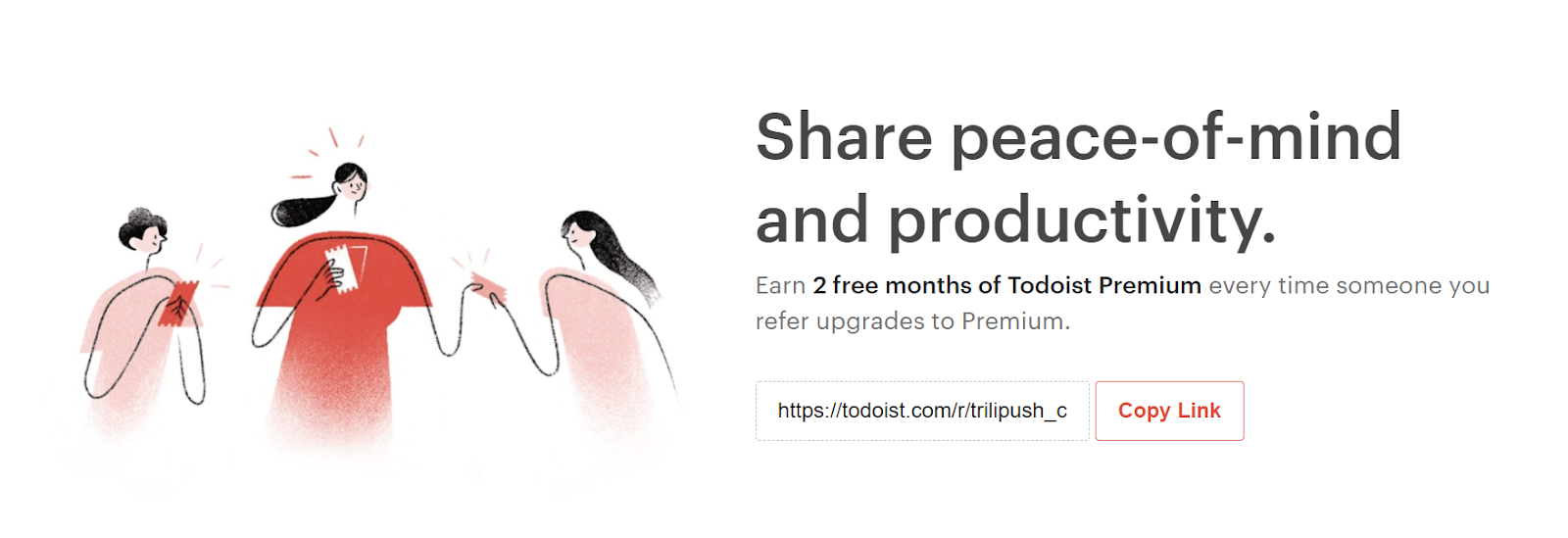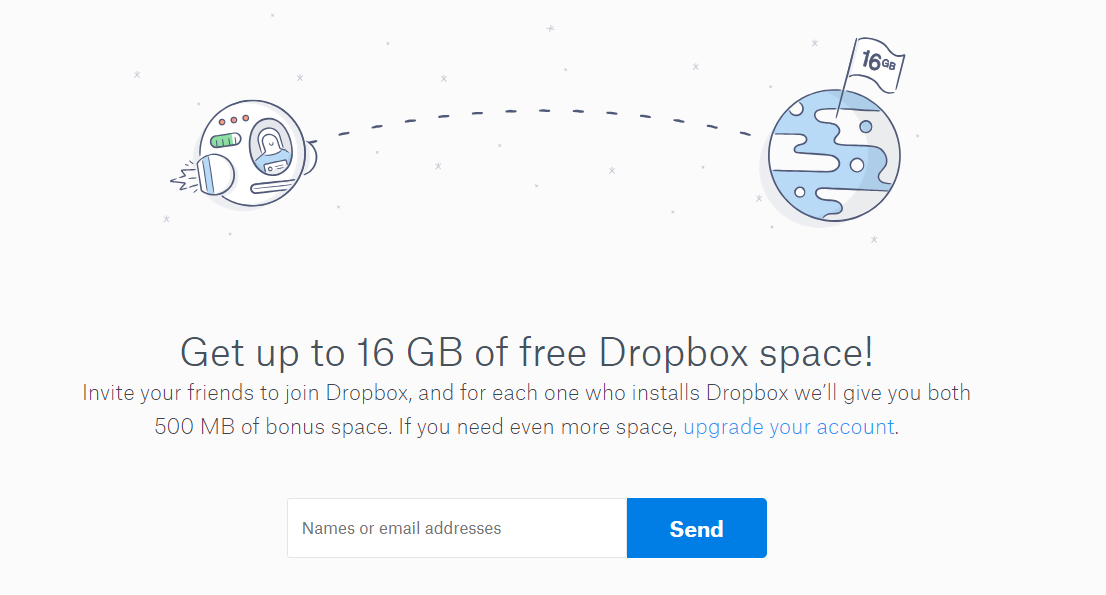Put your growth on autopilot
GrowSurf is modern referral program software that helps product and marketing teams launch an in-product customer referral program in days, not weeks. Start your free trial today.
Loyalty and referral programs are often used interchangeably, but they're two distinct marketing strategies with different objectives. Loyalty programs aim to incentivize repeat purchases from existing customers, while referral programs focus on acquiring new customers through word-of-mouth referrals from your current customer base.
While both aim to create value for customers, loyalty and referral programs serve distinct purposes and typically require separate software solutions and strategies. Loyalty programs incentivize customers to make repeat purchases through rewards like points, tiers, or discounts. Referral programs incentivize customers to refer new buyers, often through unique referral links or codes.
Let's explore the difference between the two in more detail and see which type of program better suits your business.
If you're thinking about investing in a referral program but still don't know how your company would benefit from one, take a look at some of the key benefits of referral programs below.
The list of benefits of loyalty programs is just as long as the list of benefits for referral programs. The top five benefits that we must mention are:
While loyalty and referral programs share some similarities in rewarding customers, the core difference lies in their primary objectives:
Let’s dive into a more detailed comparison.

One of the major differences between loyalty and referral programs is their core purpose and target audience:
On the other hand, referral programs incentivize existing customers to promote your brand and products to their networks, typically through unique referral links or codes. The referring customer receives a reward, like cash, discounts or free products/services, when someone uses their referral link to make a purchase. Many referral programs are "two-sided," meaning both the referrer and referred customer receive rewards. This approach helps acquire new customers in a cost-effective way while also rewarding customer loyalty.
Referral program rewards can take many forms, from cash and gift cards to discounts, free products/services, or branded swag. The key is selecting referral program incentives that align with your brand, audience, and business model. For example, a SaaS company may offer free subscription months, while an ecommerce brand could provide discounts or free shipping. Testing different rewards can help optimize your referral funnel.

Word-of-mouth recommendations from friends and family hold immense sway - according to a 2015 study, 83% of online consumers trust these personal referrals over business advertising. This underscores why referral programs can be such a powerful acquisition channel by tapping into established trust networks.
Not only are referrals highly trusted, they also drive significantly higher conversion rates. Some studies show the conversion rate for referral leads is over 3 times higher than the average lead. This makes sense when you consider the pre-existing positive impression and trust factor from a personal recommendation.
Beyond just higher conversion rates, referred customers also demonstrate increased profitability and lifetime value compared to other acquisition sources. One study found that referred customers generate 16% higher lifetime value on average. Since they start off with a positive brand impression, referred customers tend to stick around longer and have a lower churn rate.
One of the most critical factors for a successful referral program is selecting compelling incentives that resonate with your target audience and brand positioning. For example, SaaS companies can offer free premium feature access for a limited period, while ecommerce brands may provide discounts or free shipping. The rewards should provide real value while aligning with your product offering and customer expectations.
For businesses looking to rapidly build traction and awareness, cash rewards can be an effective referral incentive. People get excited about cash, making them more likely to actively promote your brand to their networks. This approach works well for startups or companies in highly competitive markets that need to quickly acquire new customers at scale.
Sign up for a free trial of GrowSurf to lower your customer acquisition costs, increase customer loyalty, and save gobs of time.

One of the most famous examples of a wildly successful referral program is Dropbox's double-sided incentive in their early days, which led to 3,900% growth in just 15 months. Both the referrer and referred user received 500MB of free storage space, up to 16GB total. This simple but valuable reward helped Dropbox grow from 100,000 to over 4 million users in just 15 months through viral word-of-mouth.
The Dropbox referral program was quite simple: give free space to people who refer their friends and those who accept an invitation to register for Dropbox.
Their incentive was double-sided: both the referrer and the referee would get 500 MB of free space. Every new referral would get them 500 MB of additional free space, up to a limit of 16 GB.

Loyalty programs have withstood the test of time, remaining a staple marketing strategy for businesses across industries for decades. Their enduring popularity stems from their ability to cultivate long-term customer relationships and drive profitable behaviors like repeat purchases and brand advocacy.
When executed well, loyalty programs foster deep customer loyalty and engagement that translates to higher profits. Loyal customers tend to have higher lifetime values, as they make more frequent purchases, spend more per transaction, and are more likely to pay premium prices. They also organically promote the brand through word-of-mouth, effectively becoming unpaid brand ambassadors who help acquire new customers.
At their core, successful loyalty programs foster a sense of exclusivity and added value that keeps customers engaged and coming back. Whether through VIP tiers, members-only perks, advance access to new products, or free gifts and discounts, loyalty programs make customers feel special and appreciated. This emotional connection and perceived value incentivizes ongoing loyalty and repeat business.
There are two major factors at play when deciding whether you should opt for a loyalty or a referral program: the frequency of purchase and the size of purchase.
As a general rule, referral programs can be effective for businesses with either low or high purchase frequencies. Loyalty programs, however, tend to work best for products or services with higher purchase frequencies that allow customers to accrue rewards more rapidly. For example, a coffee shop with daily visitors could implement an engaging loyalty program through a punch card or app. In contrast, referrals may be better suited for lower frequency purchases like insurance or financial services where it's harder to incentivize repeat business through a traditional loyalty model.
| Type of Business | Frequency of Purchase | Price of Purchase | Recommended Rewards Program |
|---|---|---|---|
| B2C Subscriptions | High | Low | Referral |
| Online Education | High/low | High/low | Referral and loyalty |
| B2B SaaS | High/low | High/low | Referral |
| Financial Services | Low | High | Referral |
| Online Insurance | Low | High | Referral |
| eCommerce | High/low | High/low | Referral and loyalty |
| Restaurants | High | Low | Loyalty |
Referral programs work better for B2C subscriptions. These typically have a frequent monthly purchase, and they tend to be affordable. Gift cards, monthly discounts, or account credits are some of the best rewards for these types of businesses.
Best for Online Education: Referral and loyalty
Referral and loyalty programs are both suitable for online education businesses. The services these companies offer may take place annually, monthly, or weekly. The price can also range from low to high, depending on the service. In general, online education services are more affordable than a one-time service. In this case, both referral and loyalty programs are suitable options.
Best for B2B SaaS: Referral
B2B SaaS solutions are growing in popularity. From CRMs and cloud storage to software for teachers and cloud-based messaging apps, they all assist businesses to operate more efficiently. Most customers can expect to subscribe to a monthly or annual fee.
The frequency of purchase and the price can vary, depending on the type of service. In other words, one B2B SaaS company can offer a service that has a low frequency of purchase at a high price, and another can offer a service with a high frequency but at a low price.
The ideal pick for these SaaS solutions would be referral programs.
Best for Financial Services: Referral
Financial service companies offer services including managing, investing, exchanging, or holding money on behalf of clients. These services tend to have a lower frequency of purchase at a higher price. The ideal program would be referral programs.
Best for Online Insurance: Referral
Online insurance companies can offer a range of services, from car and pet insurance to life insurance and estate planning. These services tend to have a lower frequency of purchase at a higher price. The ideal program would be a referral.
Best for Restaurants: Loyalty
When it comes to restaurants and coffee houses like Starbucks, loyalty programs are a better pick. Customers here generally make more frequent purchases at a lower price.
Best for eCommerce: Referral and loyalty
One can't help but think of Amazon when it comes to eCommerce businesses. This eCommerce giant has been exploding in popularity thanks to the ease of purchase but also its well-known loyalty program, Amazon Prime. eCommerce purchases can vary in both frequency and price. For example, someone may make frequent and small purchases from the same online shop, while another customer may make a one-time purchase at a higher price. Both referral and loyalty programs work.
Running a referral or a loyalty program by yourself is entirely possible, but only if you have a small number of customers. What do you do when you get thousands of customers? Referral programs are not as simple as choosing the best incentive and issuing points cards. Simple spreadsheets won't do the trick.
The fact is that referral programs involve plenty of manual work, from managing rewards to measuring results. You'll need one hell of a team to make this happen without the help of software.
These referral program software solutions will work silently in the background to automatically track referrals, send out emails, issue rewards, promote your program, and more. You don't need a big team to manage the program. You only need a few good people to keep an eye on the processes.
Similar to how the two types of programs differ, the software to run them also comes with program-specific functionalities. Although they may have some overlapping features, they will be tailored to each type. So, if you're thinking about running a referral program, get a specialized software for that purpose. The same thing applies if you're going for a loyalty program.
Throughout this post, we've been focusing on the major differences between the two types of programs. As a closing thought, it's important to mention the similarities, as well. For one, both programs create immense value for the customer and can help your brand build long-lasting relationships.
Wrapping up:
Sign up for a free trial of GrowSurf to lower your customer acquisition costs, increase customer loyalty, and save gobs of time.


GrowSurf is modern referral program software that helps product and marketing teams launch an in-product customer referral program in days, not weeks. Start your free trial today.
Increasing customer loyalty leads to retained customers, more revenue and increased brand value. Building on customer loyalty makes a big difference to growth.
Is now the right time to launch your referral program? Here are the 5 signs that your business should be looking out for that signal referral program success:
Brand equity is the difference between being well liked and being iconic. Building brand equity is a long, difficult process that starts with studying legends.